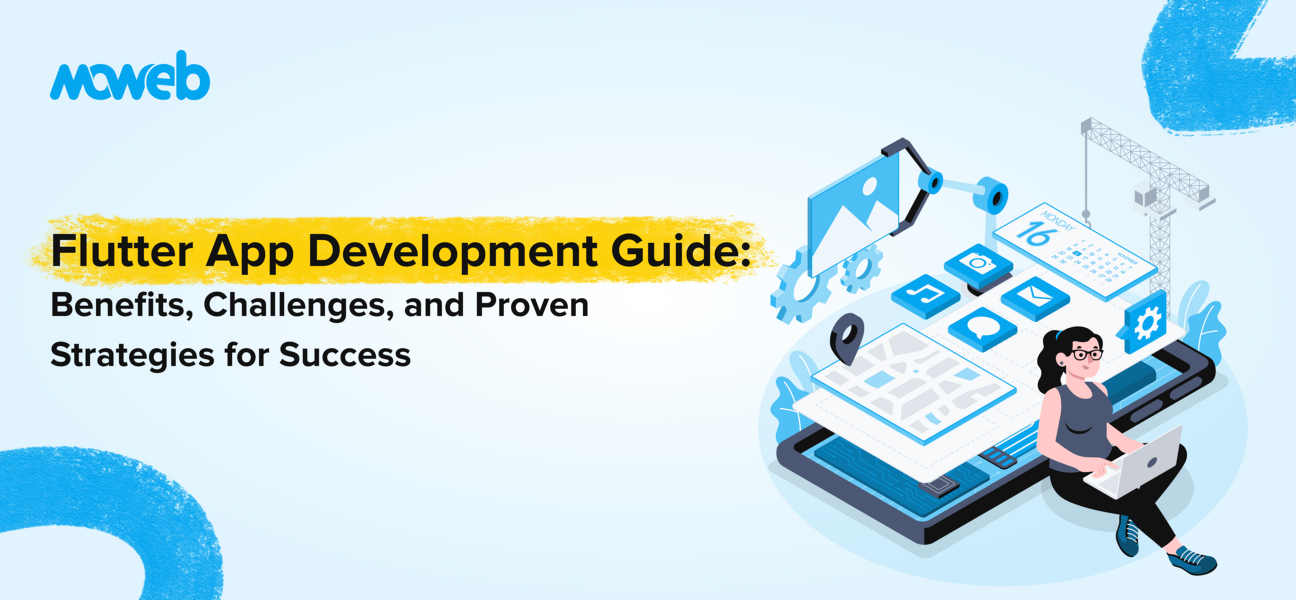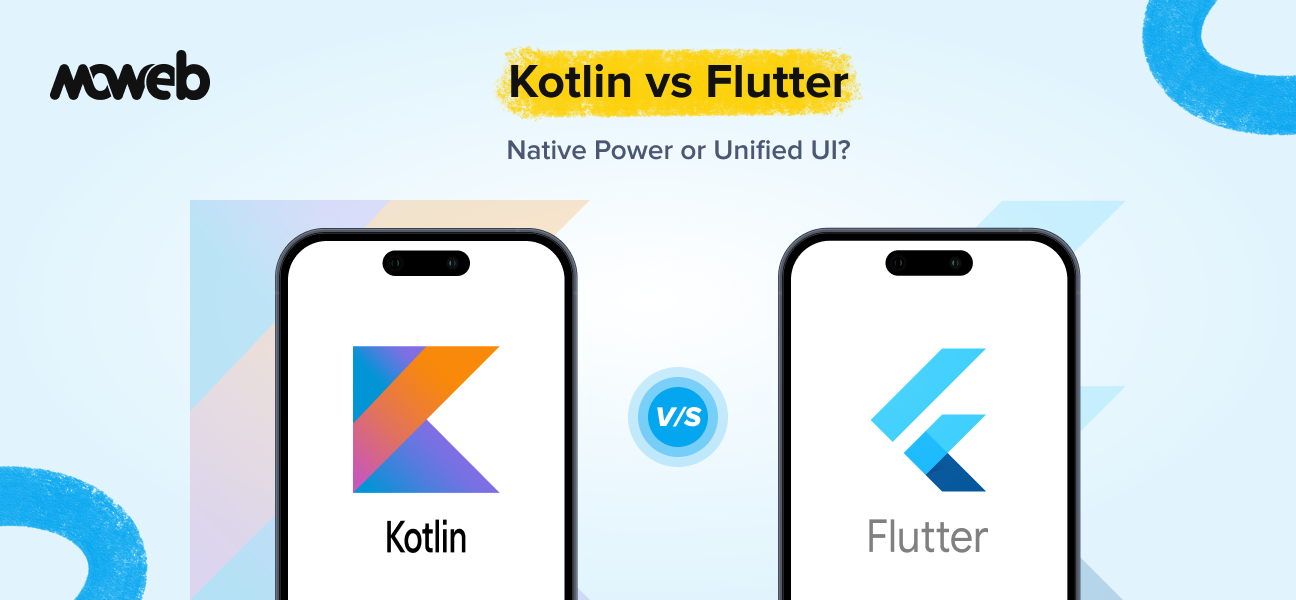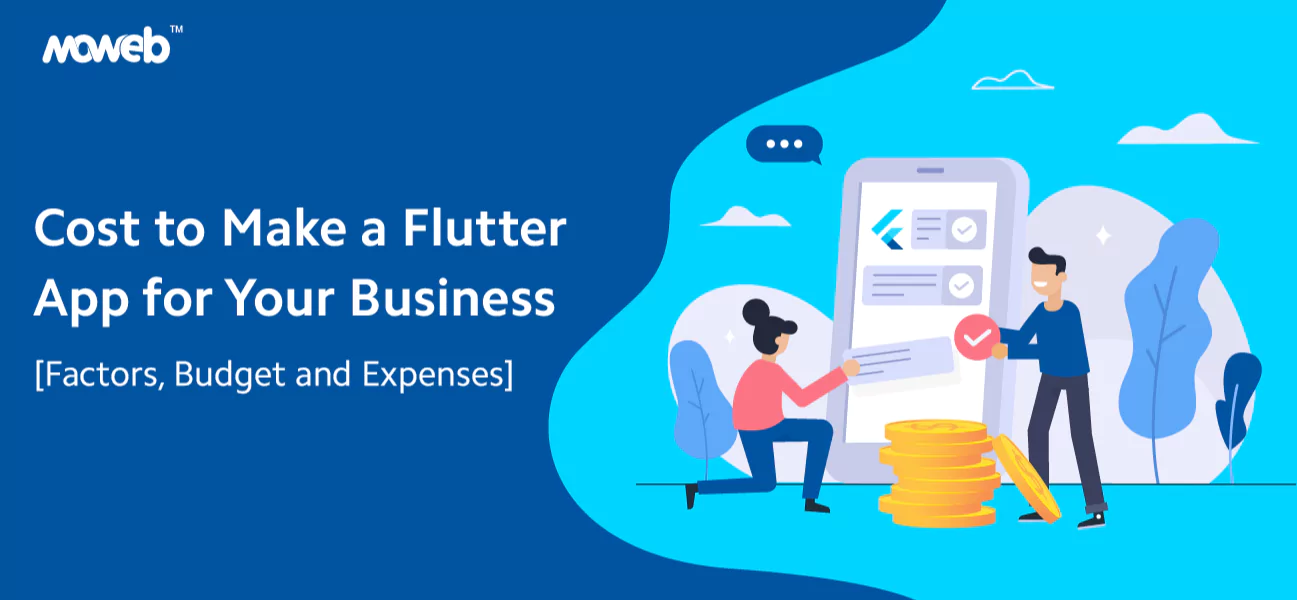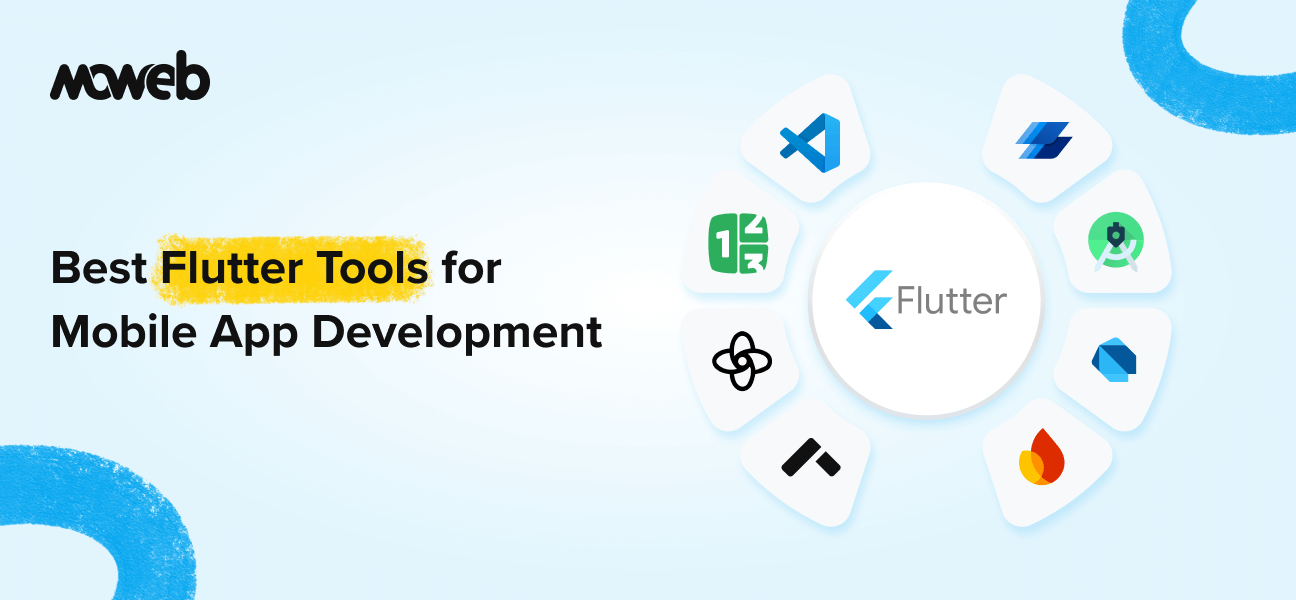
Overview:
Flutter app development has emerged as a powerful solution for creating mobile applications that work seamlessly across platforms. Developed by Google, Flutter is now one of the top choices for businesses aiming for high performance and beautiful UIs on both iOS and Android. In this blog, we explore the common challenges, proven strategies, and successful use cases in Flutter app development, showcasing why it’s transforming the world of mobile app development.
Imagine building an app that looks, feels, and functions like a native app on both iOS and Android but requires only one codebase. That’s the promise of Flutter, Google’s groundbreaking toolkit for cross-platform mobile app development.
Did you know? The global app market is set to grow at a 14.3% CAGR by 2030. But success isn’t just about numbers—it’s about meeting user needs. With the right investment and a user-first approach, cross-platform app development makes this possible.
In this Flutter app development guide, we’ll dive into the full scope of Flutter app development: its flutter challenges, solutions, and industry use cases. By the end, you’ll have a clear understanding of how Flutter can drive impactful mobile solutions that don’t compromise quality or performance.
Building an app in 2025? You’ve probably heard ‘use Flutter’—but does it live up to the hype? Let’s cut through the noise: here’s when Flutter shines
Why Choose Flutter for Mobile App Development?
Flutter stands out from other mobile app development frameworks due to its ability to compile natively for both Android and iOS, creating apps that deliver a near-native experience with a single codebase. Let’s explore some compelling reasons why businesses and developers are choosing Flutter for mobile app development:
- Single Codebase, Dual Platform: A single codebase for both iOS and Android means faster development, reduced costs, and easier maintenance.
- Impressive Performance: Flutter apps run at native speeds due to direct compilation, ensuring smooth animations and responsive interfaces.
- Customizable Widgets: Flutter’s vast widget library allows developers to create custom UIs that enhance user experience and engagement.
- Strong Community and Google Support: Flutter is backed by Google and has a growing community of developers, ensuring consistent updates and support.
- Easy maintenance: Update once, roll out everywhere.
- Backed by Google: Continuous updates and community support.
- Consistent UI across devices: Thanks to Flutter’s custom rendering engine.

Key Challenges in Flutter App Development
Even with its remarkable capabilities, Flutter app development comes with its own set of challenges. Here’s a closer look at these challenges and actionable strategies to overcome them.
Platform-specific Code and Integrations
- Challenge: Despite offering a single codebase for cross-platform app development, some functionalities still require platform-specific code to interact with native features like GPS, camera, or sensors. This complexity can slow down development.
- Solution: Flutter’s platform channels enable seamless integration of native functionalities by bridging the gap between Dart and platform-specific code. Collaborating with experienced Flutter developers ensures efficient use of these channels, reducing downtime and maintaining performance.
- Example: Integrating geolocation services on both iOS and Android can be streamlined through customized plugins.
Limited Libraries for Advanced Use Cases
- Challenge: Flutter’s library ecosystem, while extensive, may not always meet advanced use case requirements. Developers sometimes need to rely on third-party libraries or create custom solutions, which can be time-intensive.
- Solution: Before starting the project, conduct thorough research to identify the libraries and plugins required for your mobile app development services. For complex applications, such as those needing AI/ML integrations, hiring a Flutter app development company with expertise in creating custom libraries can bridge the gap effectively.
- Example Use Case: A retail company using Flutter mobile app development for AR-based shopping experiences may need custom plugins to deliver an optimal user interface.
Large App Size
- Challenge: Flutter apps, due to their bundled Dart runtime, tend to have a larger file size compared to native apps, impacting download rates and user retention.
- Solution: Optimize app assets by compressing images, using efficient libraries, and enabling Flutter’s tree-shaking feature to remove unused code. Leveraging modern tools like Google’s Flutter DevTools ensures the app remains lightweight without compromising on performance. Many top app development companies in the USA use these strategies for creating lightweight apps.
Testing and Debugging Across Platforms
- Challenge: Ensuring a flawless experience across both iOS and Android can be time-intensive, as device-specific issues may arise.
- Solution: Automate testing with tools like Firebase Test Lab or Flutter’s Integration Test package. These tools enable continuous testing across devices, reducing the debugging effort. For apps requiring complex backend interactions, integrating testing frameworks ensures robust performance under varied conditions.
Ensuring Smooth UI and Animation Performance
- Challenge: Flutter is known for creating stunning UIs and animations, but achieving smooth performance on lower-end devices can be tricky.
- Solution: Optimize the widget tree by reusing widgets wherever possible and profiling animations using Flutter DevTools. For instance, Flutter developers working on gaming apps ensure minimal frame drops by limiting unnecessary renders and leveraging custom animations for lightweight transitions.
Related Post: Flutter for MVP Development
Proven Strategies for Flutter Development Success
To overcome the challenges in Flutter app development, implementing these tried-and-tested strategies can ensure a smooth development lifecycle and deliver superior results.
Adopt a Modular Architecture
Breaking down the application into smaller, reusable modules not only simplifies development but also speeds up maintenance. This approach is particularly useful for cross-platform mobile app development, where the complexity of managing shared code can otherwise escalate.
- Example: A Flutter development company building an on-demand delivery app can create modules for user authentication, order tracking, and payments, ensuring scalability and easier updates.
Use Flutter DevTools for Performance Optimization
Flutter DevTools provides powerful profiling capabilities to identify bottlenecks, monitor memory usage, and optimize rendering. Leveraging these tools ensures that apps maintain native app development standards across devices.
- Example: A Flutter mobile app in the healthcare domain using heavy animations for patient data visualization can use DevTools to ensure real-time performance on mid-range smartphones.
Automate Testing with CI/CD Pipelines
Continuous Integration (CI) and Continuous Deployment (CD) pipelines allow automated testing and deployment, minimizing errors and ensuring quick updates. Popular pipelines like GitHub Actions or CircleCI integrate seamlessly with Flutter development, making them a go-to for mobile app developers.
- Example: A healthcare app can use GitHub Actions for CI/CD to test features like appointment scheduling or video consultations automatically across devices, ensuring functionality and compliance before deployment.
Utilize Firebase for App Insights
Google Firebase provides a comprehensive suite of tools like crash analytics, A/B testing, and push notifications, enabling developers to monitor app performance and engage users effectively. For flutter app development, Firebase acts as a reliable backend, ensuring smooth integration with both iOS and Android platforms.
- Example: A ride-hailing app can use Firebase for real-time crash reporting and user behavior analysis, improving app stability and personalizing the rider’s experience.
Leverage Widgets for Consistency
Flutter’s extensive library of customizable widgets ensures consistent UI/UX across platforms. Developers can maintain a cross-platform mobile app development experience while tailoring the app’s look and feel to align with brand aesthetics.
- Example: An eCommerce app can use Flutter widgets for cart management, payment options, and product listing, ensuring a unified experience that matches the brand’s aesthetic on both iOS and Android.

Flutter’s Technical Advantages
- Hot Reload: Explain how it speeds up development (instant UI updates without full rebuilds) and share a real-world scenario where this saved time.
- Widget Library: Competitors detail Flutter’s rich, customizable widgets—mention how this reduces dependency on third-party libraries compared to React Native.
- Performance: Compare Flutter’s native compilation (no JavaScript bridge) to frameworks like React Native. Use simple benchmarks (e.g., “Flutter apps run at 60fps even with complex animations”)
- UI flexibility: Customize every pixel.
- Fewer bugs: Shared codebase reduces mismatches across platforms.
- Cost-effective: Less time = less cost.
Popular Use Cases for Flutter App Development
Flutter’s capabilities make it a top choice for various industries. Here are a few use cases where Flutter shines:
- Alibaba: Leveraged Flutter to scale apps globally.
- BMW & Toyota: Choose Flutter for in-car infotainment systems.
- eCommerce Apps: Flutter’s customizable widgets allow for a rich UI/UX, and its cross-platform capabilities make it ideal for mobile shopping experiences.
- Social Media and Chat Apps: Apps like Google’s Stadia use Flutter to offer consistent, high-quality interfaces across devices, especially for multimedia sharing and live chats.
- Google Ads: Built with Flutter to manage campaigns on the go.
- On-Demand Services: Flutter’s fast development cycles make it suitable for services that require frequent updates and feature enhancements, like food delivery and ride-sharing apps.
- Healthcare Apps: Flutter’s support for animations, charts, and real-time data makes it an excellent choice for health monitoring and telemedicine applications.
- Enterprise and Fintech Apps: Flutter’s secure environment and backend integrations allow businesses to build reliable apps that handle sensitive information, ideal for banking and financial services.
Why Partner with a Flutter Development Company?
A Flutter app development company offers specialized knowledge and resources that streamline the process and maximize your project’s success. By partnering with an experienced Flutter development team, you gain access to a pool of talented Flutter developers who understand best practices, optimization techniques, and industry standards.
At Moweb Limited, our expertise in cross-platform app development helps you leverage Flutter’s full potential, delivering high-performance applications tailored to your needs.

Conclusion: Embrace the Future of App Development with Flutter
Flutter app development offers a powerful solution for businesses looking to create seamless, responsive, and scalable mobile applications. By addressing common challenges with the right strategies and utilizing Flutter’s unique features, developers can deliver experiences that rival native applications.
Whether you’re building a customer-focused app or an enterprise solution, Flutter provides the flexibility, speed, and cost-efficiency you need. Partnering with a skilled Flutter app development company like Moweb Limited ensures you achieve these benefits, delivering an app that stands out in today’s competitive market.
FAQs
Why choose Flutter for cross-platform app development?
Flutter is the best choice for cross-platform app development because its single codebase approach allows developers to create apps that work seamlessly on both iOS and Android, saving time and reducing costs. Flutter offers near-native performance and extensive customization options, making it a popular choice for businesses and developers alike.
What challenges should I expect in Flutter app development?
Common challenges include managing platform-specific code, dealing with app size, and optimizing performance across devices. However, these can be mitigated with strategic planning, modular architecture, and optimization tools like Flutter DevTools.
How does Flutter improve app development speed?
Flutter’s “hot reload” feature enables developers to see code changes instantly, reducing iteration times and speeding up the development process. Its extensive widget library and single codebase for both platforms further enhance development efficiency.
Can Flutter be used for complex enterprise applications?
Yes, Flutter’s flexibility, performance, and robust integration capabilities make it suitable for enterprise applications. Companies like Google use Flutter for large-scale projects, demonstrating its reliability in handling complex requirements.
What are the cost benefits of using Flutter for mobile app development?
By using a single codebase for both iOS and Android, Flutter reduces the development time and resources required, resulting in lower costs. Additionally, as an open-source platform, Flutter is free to use, further lowering costs for businesses.
Found this post insightful? Don’t forget to share it with your network!





